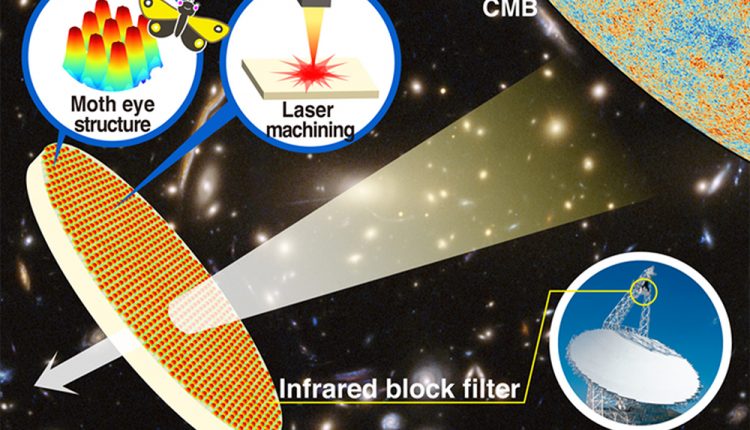
Scientists from the Kavli Institute for the Physics and Mathematics of the Universe and the University of Minnesota created a new type of optical element to improve the performance of telescopes studying radiation from the Big Bang.
Cosmic microwave background (CMB) is a relic radiation remnant from the big bang. Studying its properties, scientists infer the early physics of the big bang, how clusters of galaxies form, and the matter and energy content in the Universe.
To study the CMB, telescopes must be tuned to wavelengths in which it is most intense, about 1-3 mm, separating out shorter wavelength radiation that the atmosphere and Milky Way emit. Alumina is among the most effective optical elements that absorbs the short wavelength radiation but lets the CMB pass through. It is second in hardness only to diamond. However, it reflects almost 50% of the radiation impinging on it. Researchers invented a new way to fabricate anti-reflective structures that reduce reflections fifty-fold.
The researchers patterned alumina with small pyramidal structures, approximately one millimeter tall (0.04 inch), repeated across the 30 cm (one foot) diameter with a periodicity of just under one millimeter. Light enters and leaves the material more gradually with the small pyramids, leading to much lower reflection. They used an ultra-short-pulsed laser, with pulses a few trillionths of a second long and reaching 100 megawatts each, to ablate the material away and shape the surface relief. The researchers measured the properties of the alumina sample and showed that it reflects less than 1% of the incident radiation. This is the first time such an optical element has been fabricated and coupled to an operating instrument, and it is the largest sample of alumina to have been laser-ablated.
